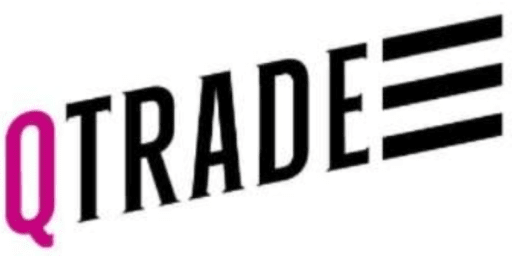Is your Life Insurance Policy about to Implode?
Your life insurance policy may be about to implode. You may be on the verge of having to pay exhorbitant premiums just to keep your existing life insurance policy in force – and with those premiums continuing to increase year over year.
Life insurance companies are already becoming aware of the issue but for the most part have not taken any action. Consumers currently are mostly oblivious to the looming problem, so take this as your wake up call!
I’m going to show you how to check your life insurance policy for danger signs, but first a bit of life insurance history is an order.
Vanishing Premium Lawsuits, 1980’s and 1990’s
Back in the 1980’s life insurance (specifically whole life insurance) was often marketed to consumers on the premise that their policies would become paid up – generally at retirement. Buy a policy when you’re 40, pay premiums for 25 years and when you hit 65 your insurance premiums are paid up for the rest of your life.
Those policies depended on non-guaranteed dividends to make the policy paid up. In the 80’s and 90’s, the non-guaranteed part came through – dividend scales were lowered. People who’d had policies for many years and were now expecting their insurance premiums to stop for the rest of their lives started to receive notices like ‘just another 10 years to go’. How would you feel about getting that letter?
Well, that’s how a lot of consumers felt. And the end result was successful class action lawsuits against the life insurance companies. The lawsuits were called ‘vanishing premium lawsuits’ because consumers had been led to understand their premiums would vanish.
Illustration Guidelines Introduced, 1990’s
So the life insurance industry collaborated and created a set of guidelines surrounding how illustrations and quotes should be displayed to consumers. Since that time consumers who purchase some types of life insurance have had to sign a piece of paper that basically says ‘stuff about this policy isn’t guaranteed’. Remember that part for later – the insurance companies now have a piece of paper that you signed that says ‘I told you so’.
Universal Life Insurance
Enter Universal Life Insurance. This insurance product become popular at about the same time as all the vanishing premium lawsuits were happening. Universal life insurance has two components – an insurance costs, and an investment. The insurance costs come in two flavours – level costs for life, and annually increasing.
Many people purchased universal life insurance (and still do today) with the annually increasing costs of insurance. The lower initial insurance costs lets them put more money into the investments early on. The investment earnings can then be used to pay part or all of the insurance costs later.
Insurance costs: $250/year when you’re young. Becoming $2000/year later when you’re older
Premiums you pay: $1000/year
Investments – you’re paying the company $1000 per year. Since they only need $250 for insurance
costs, the extra $750 goes into the investments.
Fast forward to 2008. Let’s say you’re investments have grown to $10,000 and your insurance costs have grown to $2000. You’re still paying your $1000 in premium – so half the insurance cost is paid out of your pocket each year. Let’s assume your investments are earning 10% – so your investments kick out the other $1000 and those investment earnings are then used to cover the other half of the $2000 insurance costs. That went well didn’t it? You’re still paying $1000 per year and are happy enough – it’s level just like you thought it was.
But….Anyone remember any recent market crashes?
Let’s take an alternate scenario. It’s 2008. And your $10,000, instead of earning 10%, drops 40%. Your investments are now $6000. You pay $1000 out of pocket towards the insurance costs. The remaining $1000 in unpaid insurance costs now come from the $6000, leaving you with $5000 in the investments. Even if things bounce back to 10% earnings, every year when the insurance costs are deducted, your investments are going to get smaller and smaller and eventually hit zero.
Heads up!
You’ll notice that the problem doesn’t become apparent immediately. The market crashes, and it may take 2,5, or even 10 years for the investments to dry up. But that’s making the problem worse – remember in this situation the underlying insurance costs go up every year. The longer it’s delayed before the problem becomes apparent, the worse your options are going to be.
In the initial vanishing premium scenario consumers were faced with premiums that were likely level but continuing for a longer period. The reaction was successful lawsuits. In today’s looming universal life insurance scenario consumers may be facing premiums that start out already very high and skyrocket every year after that. And the companies this time have your signature saying you were aware that these things were not guaranteed.
Do you have one of these policies?
If you have any kind of life insurance that has cash values, investments, or premiums payable over your entire lifetime, you should go dust off the policy and see if you in fact have a universal life insurance policy.
If you do have a universal life insurance policy, find the description of the insurance costs. Different companies have different names, but you’re looking for something like ‘annually increasing’, or ‘yearly renewable’. If you’ve got universal life insurance with annually increasing insurance costs, you’re in danger of your policy imploding.
What can you do?
If you find yourself in this situation, the first thing to do is get informed. Call you insurance company and ask for an ‘inforce illustration’. They should use your current investment balances, along with a reasonable and conservative investment rate of return. That will give you an estimate of what things may look like going forward. I would point out that even ‘reasonable and conservative’ may not match reality. Try throwing a -40% rate of return in there once in a while and see what happens.
Any specific actions you take after you’ve become informed is still likely to be painful, but the best time to fix it is now. If you’re healthy, you may consider purchasing a new insurance policy with guaranteed level insurance costs. Of course if you surrender your existing policy, any cash that comes out of it will probably be taxed and may also have surrender fees attached to it.
If taking a new medical exam isn’t an option, you may ask your insurance company if you can convert your insurance costs from annually increasing to level. Different companies will have different rules surrounding this. And if you’re still confused, don’t hesitate to call a couple of insurance brokers. These are complicated policies with complicated choices so review your options carefully and ask questions. In the end, the best thing you can do is ensure as much about your insurance policy is guaranteed as possible, and don’t let your future insurance premiums be dependent on anything not guaranteed – no matter how sweet the illustrations look.
Glenn Cooke is an independent life insurance broker and president of Life Insurance Canada Inc. He can be reached at (866) 662-5433.
I've Completed My Million Dollar Journey. Let Me Guide You Through Yours!
Sign up below to get a copy of our free eBook: Can I Retire Yet?











Hello,
I’m so overwhelmed to research about UL product from Canada Life and ivari. It finally brought me to this 8 years old post :). I have some advisory questions here. From those 2 different inserers, I got an illustrated 20 years UL plan which comes with ART (Annually Renewable Temrs) or Annually Increasing cost-of-insurance rates to 85. If I’m correct about the prioritized importance of level-cost term and insurers’ cash flow, should I simply choose wealthier insurer and ask my insurance advisor to get “level-term” option for the fixed insurance premium cost?
In my current situation, I have TFSA investment as well as some real estates, but no personal insurance (except property insurance) at all due to living expenses. I’m 32 and looking to pay off my mortgage for next 30 years. I’m in a middle tax bracket but willing to be in the top bracket in next 5 years. Many of my friends rushed to start their UL because of that attractive “bonust interest” to enhance their future returns.
I was very skeptical on that due to the market (S&P 500) fluctuatation recently, but now I feel little behind..
Can I ask for your wise advise on this?
KelDude,
I think you are talking about a universal policy. If you have details of the plan, I might be able to give you some direction.
Brian
I purchased a “Whole Life” plan from Equitable Life years ago which was to be “paid up” when I turned 65. Well with the financial fiasco we went through since 2008, instead of being “paid up”, my premiums went up to double what they were before 65. Now I’m being told I have to pay these increased premiums for at least 5 more years! The Financial Advisor I used way overestimated what interest rates would be realized and missed by a mile. Equitable life says the advisor blew it and its not their fault. Wrong! It was their policy and they accepted it from the advisor as a new policy so they are complicit in the deal. They gladly took my money. Now I’m being fleeced for the foreseeable future. I’ve always felt insurance was a scam and now I know for sure it is. Yet, it’s all totally legal with Gov’t oversight saying “this is great stuff”!
One truth about Universal Life is that they are very complex financial instruments. In the right situations (not that common) they can be a great tool. But they are certainly not for everybody, just a small minority.
And if you are going to buy Universal Life, unless you are very wealthy and max funding the plan, you should always be sure that the premium is set to Level Cost of Insurance (not Yearly or Annual Renewable Term).
Unfortunately, the people at WFG (I started my career there and then left as soon as I figured out what they were about), for the most part do not understand much about financial instruments. They are a Mult-Level Marketing company with a very high attrition rate of personnel, and no internal financial planning methods or tools. Their leaders have actually said that ‘everyone should own Universal Life Insurance’, but they are the very people responsible for setting up many of these imploding UL plans.
The average person, and many insurance advisors, do not generally understand the implications of Yearly Renewable Term, and by the time they realize the problem, they are either unable to afford to fix it, and may not be able to qualify for insurance as they have aged substantially.
The insurance companies, especially Transamerica who owns World Financial Group, should have been beaten mightily by regulators long ago. But little has changed in spite of the problems.
Having said all this, Universal Life can still be a powerful tool when set up properly by someone who truly knows what they are doing, for the right client.
Hello Brad,
Read https://www.sunlife.ca/en/insurance/life/term-vs-perm/
That would be a good start.
Brian is a CFP? And drinks the koolaid on dividends. Dividends have paid out for 100 years, of course they have because they are not dividends in the ‘stock’ sense of the word, Insurance dividends are nothing more than a refund of an overcharge of premiums. I charge you more than the cost, give you a bit back and ask you to thank me for giving you back the overcharge. What a scam.
Dividends–
The tax code considers policy dividends to be refunds of overcharges and thus not taxable, but there are two exceptions to this general rule. First, when the total of all dividends paid in cash exceeds the total premiums paid, the excess becomes taxable income (this rarely happens). Second, when dividends are accumulated at interest, the interest becomes taxable
as if the account were passbook savings.
But dividends used to reduce premiums do not trigger either of these tax issues and dividends used to purchase one-year term or buy paid-up additions remain tax-free benefits.
As per LLQP manual on Life Insurance and Taxation
Orlando,
I think you are missing some details on whole life dividends and I am sure you do not get involved in personal or corporate tax returns.
The dividends comes from different sources. One is the premiums charged to the policy holders. This is to cover the death benefit because this built to last, any extra money is is invested in other areas such as bonds, mortgages and some stocks in a pooled fund which a fee of less than .4% is charged. After all other expenses such as claims paid, dividends are paid to the policy holder. Since the investments are conservative, many of these investments did not go down in 2008 like other asset classes.
These dividends have been paid out in some cases every year for 100 years in Canada.
If set up correctly, the insurance coverage and cash value grow every year. (the cash value can be accessed tax free if done correctly). Is there better investments the answer is yes! Can you get more coverage for less money when you are young yes. Is this for everyone, no! Cash flow is important.
If one has good cash flow (personal or through their corporation) the money can be used many times over.
In retirement, when one is in the distribution phase you can pay less taxes and have more money to spend with better protection against all economic conditions .The money can be used to buy other things, provide protection. If one is sick, the policy can be paid up to 65 by the insurance company. No investment can guarantee that.
@ Ray
See my comment on dividends as pertaining to life insurance and you will see that those dividends are not as attractive anymore. Regarding your 20-pay life “cool policy”, of course you don’t pay after 20 yrs because you have already paid for it as they calculate how much premiums you would have to pay over the life of the policy and they compact it in 20 yrs time, so your monthly premiums are higher than if it had been a normal whole life policy. It’s like when you buy a $20,000 car an you have choice to pay your loan in 3, 5 or 7 years; if you chose to pay it back in 7 yrs, your payments are lower than if you pay it back in 3 years, but you still pay $20,000.
Glenn, your article is right on the money and very educational. Hope a lot of people read it. Good job!
Re. Dividends:
Dividends from a whole life participating policy are not the same as dividends from the profits of a company.
Premiums charged in a whole life participating policy are higher than a regular non-participating policy; the dividends are a partial repayment of over charged premiums.
Premiums are overpaid when the insurer incorrectly estimates mortality rates and policy administrative expenses. These so called dividends have nothing to do with the overall profits of the company.
Once mandatory reserves have been funded the excess is returned to the par policy holder as what is called an insurance “dividend”. The dividends are not reportable income as they are refunds of the clients own after tax income.